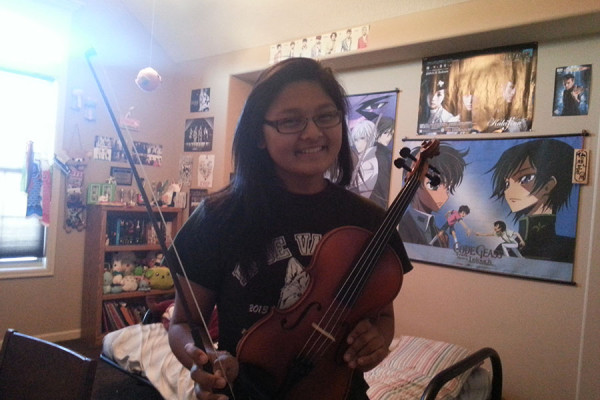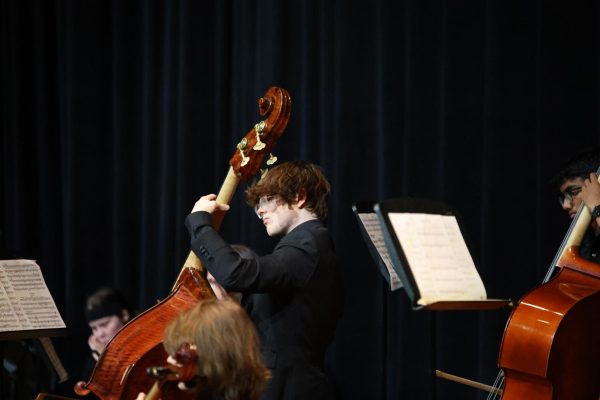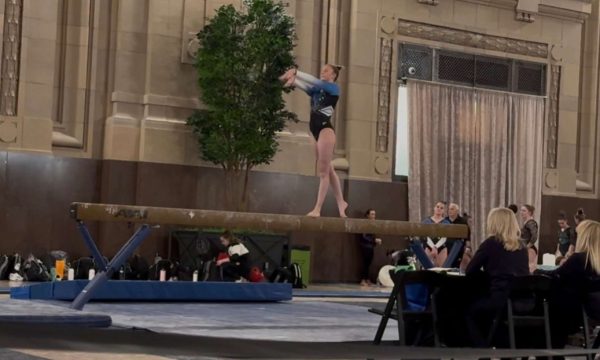The Red Dress and the Violin
An Exclusive on Dancer and Violinist Amira Bajracharya
She’s wearing a scarlet silk dress, and her gold jewelry sparkles as she moves. Covered with shimmering makeup and a golden headpiece adorning her head, she begins the dance. The audience watches, enraptured.
Hours later, freshman Amira Bajracharya’s dance is over and she is alone in her room. The faint smudges of the dance makeup are still on her cheeks. She pulls out her violin, tuning it with practiced ease, and loses herself in the music.
Small Beginnings
In fourth grade, students at Amira’s elementary school were given a chance to join the strings program. Amira took the opportunity, choosing the violin. She was the first person in her family, including aunts, uncles and cousins, to play an instrument.
In addition, Amira started dancing at age three, taking ballet and tap dancing lessons. She quickly developed a passion for dance. At age ten, she moved on to a different style of dance – Kuchipudi.
Kuchipudi is a type of Indian classical dance popular all over South India. First, each dancer comes onstage and introduces their character with a small song and dance. Then, the drama begins and they dance, accompanied by instruments like violins and flutes.
This type of dance is a way for Amira to connect to her culture. Her parents are from Nepal, which is a country between India and China. Even though Amira was born in Chicago, her Nepali culture is still important to her, and her family visits Nepal every few years to see her relatives.
Now and Then
At the moment, Amira attends Gurukul Academy, which is a studio in the house of her dance instructor, Samarpita Bajpai, learning Kuchipudi. She dances for an hour and a half each friday.
The dance that Amira is currently learning is called Tarangam, and it involves dancing on the rim of a plate with a pot full of water balanced on her head and a lit candle in each hand. Her dance instructor, likes to challenge her with difficult dances such as this.
“She’s really dedicated and she tries to inspire that same kind of dedication in us,” Amira said.
Not only is dance still an important part of her life, violin still plays a huge role in her everyday life. Last year, Amira’s middle school strings instructor chose a few students in her class to audition for a special orchestra program at UMKC. Amira was one of them and out of all the violinists from all over the midwest attending, she got every violinist’s dream position after her audition – first chair, first violin. She remembers it as the proudest moment in her violin career.
“I felt like I was finally a good violinist, you know?” Amira said.
She spent several grueling days at UMKC, staying at the hotel there, learning five pieces in two days and performing them with the student orchestra. Ever since then, she’s practiced violin for an hour every day.
Later that year, Amira got a chance for another audition. This was one to determine which middle school students were good enough to play with the Symphonic Orchestra at Blue Valley West. She got in, along with only two other students.
After rehearsing with the high schoolers a few times, she got to play with the orchestra at the senior graduation.Her level of performance was on par with high school students while she was only a middle schooler, and Amira doesn’t even take private lessons outside of school.
Currently, she is a member of Southwest’s orchestra. Amira’s stand partner in orchestra – the person that she shares a music stand with – is junior Sydney Carnes.
“She’s great!” Carnes said about Amira. “She’s a really good player, and she’s fun to talk to.”
Since the orchestra is split into two sections, Amira has auditioned for Symphonic Orchestra – the advanced section of orchestra – and made it in.
“Amira has done a wonderful job,” orchestra teacher Adam Keda said. “Making friends with kids of all ages come easy to her because she is such a nice welcoming student.”
In addition to being in Symphonic Orchestra, Amira is also one of two freshmen out of 24 that are in the first violin section of the orchestra. According to Keda, the section tends to play more difficult music than the second violin section.
Inspirations and Aspirations
Amira hopes that she’ll inspire others in her family and in the Nepali community to play the violin or other instruments. She also wants to inspire her children to consider playing instruments.
“Violins aren’t all about just that classic stuff. I want to be that person that can play songs and make them interesting,” Amira said. She’s already influenced one person, her younger sister.
“Amy’s a good player…so I joined Orchestra too,” eleven-year-old Anusha Bajracharya said. “It looked like fun.”
In the future, Amira hopes to get a scholarship in music. She’s considering going to Ottawa University. However, even though she doesn’t want to pursue a career in dance, she still hopes she’ll continue dancing throughout her life.
Amira finishes practicing and puts her violin in the case. Across the room, her dance outfit – red and shimmering – hangs in the closet ready to be worn again.





